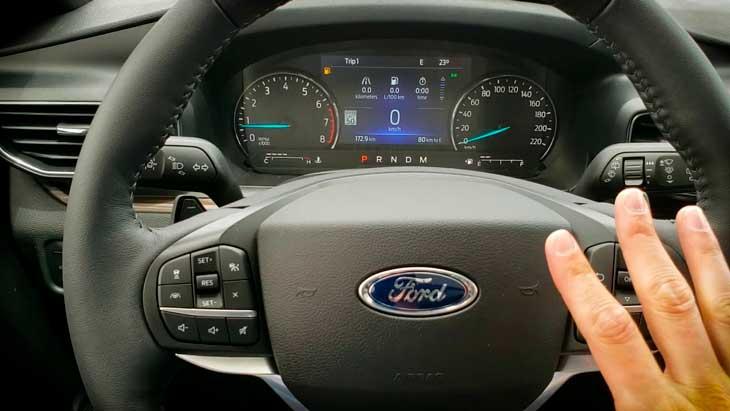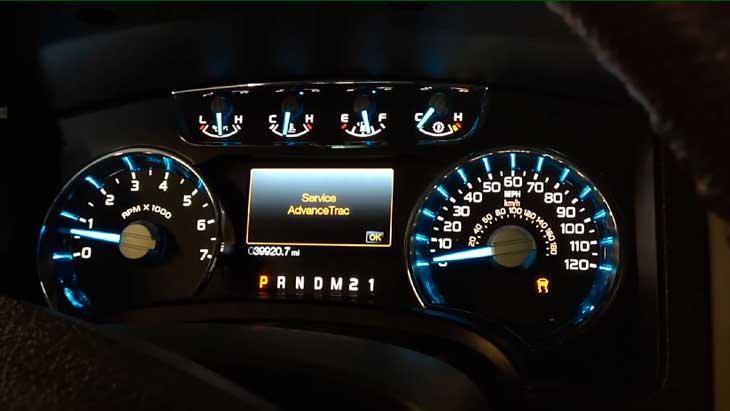
Driving has grown easier and safer with the advent of power steering technology in vehicles, providing more agility and increased vehicle control.
The power steering system includes both hydraulic power steering and a power steering assist system. If the system fails, it will trigger a power steering assist fault warning. When this occurs, you need to determine how to fix the power steering assist fault.
What is Power Steering Assist?

In the past, steering a car involved gripping the steering wheel with both hands and exerting physical effort. The introduction of power steering in 1951 marked a significant shift.
The hydraulic power steering system, first featured in the 1951 Chrysler Imperial, became the standard for the next five decades. Today, we have Electric Power Assisted Steering (EPAS).
Unlike traditional hydraulic systems, EPAS incorporates a hydraulic pump and utilizes hydraulic fluid. Instead of using the engine’s energy, it uses an electric pump to pressurize the fluid, which aids in steering.
Shop From Amazon
How Does It Work?
The system operates similarly to other hydraulic systems, maintaining accuracy through a network of components. The hydraulic fluid, stored in a reservoir, is pumped as the steering wheel is turned, transferring and amplifying the force to the road wheels.
Traditionally, the pump was engine-powered, linked by a belt. However, modern systems employ an electric pump that draws power from the battery, enhancing efficiency.
The older method, with a constant belt connection, proved less efficient. The electric pump addresses this inefficiency by drawing energy from the battery only when required.
In essence, a power-assisted steering system, or power steering, has evolved from hydraulic-only systems powered by the engine to contemporary hybrid systems incorporating an electric pump.
What Does Power Steering Assist Fault Mean?

The appearance of a power steering assist fault indicates an issue with your power steering system. The specific fault can vary within the power steering assist system.
Various problems may arise in hydraulic systems, while others may manifest in electric systems. Here are some common culprits, categorized by type:
Hydraulic Power Steering Assist Faults
Hydraulic power steering failures typically occur due to hydraulic fluid leaks or power steering pump failures. Hydraulic fluid leaks can result from worn-out pipes, fractures, controller issues, or worn-out rubber seals, causing a noticeable red fluid leak.
Power steering pump failure, driven by the engine’s serpentine belt, can lead to a lack of hydraulic pressure, making steering significantly more difficult.
Electric Power Steering Assist Faults
In Electric Power Steering (EPS) systems, common faults involve the electric motor, torque sensor, or Electronic Control Unit (ECU). Electric motor failure, often due to overheating during intense steering activities, can lead to a loss of assistance.
Torque sensor issues may cause over- or under-assisting, affecting steering accuracy. ECU problems can result in improper power delivery to the motor, impacting steering assistance.
Symptoms of Power Steering Assist Fault

If you encounter a power steering assist fault, you may experience the following symptoms:
- Dashboard warning light illuminated.
- Difficulty turning the steering wheel, particularly at low speeds.
- Vehicle pulling to one side while driving straight.
- Unusual sounds, like whining during turns (applicable to hydraulic systems).
- Observable hydraulic fluid leaks beneath the car (applicable to hydraulic systems).
- Whining noise upon starting the car (applicable to hydraulic systems).
- The steering wheel feeling unusually light at high speeds (relevant to electric systems).
- Presence of other electrical issues, potentially indicating Electronic Control Unit (ECU) failure in electric systems.
Shop From Amazon
Is a Power Steering Assist Fault Serious?
A power steering assist fault requires immediate attention. While not as critical as, for instance, a head gasket failure, it should not be ignored.
Consider this: if you notice a power steering assist fault through a warning light or display message, take action. Car manufacturers do not incorporate warning systems for mere amusement; if there is a warning, it indicates a need for attention.
The primary risk of neglecting a power steering assist fault is not damage to the steering system itself but rather the potential for accidents.
Operating a vehicle without power steering makes maintaining control significantly more challenging, emphasizing the importance of prompt resolution.
In general, you can continue driving with a power steering assist fault unless it severely affects your ability to drive safely. If uncertain, consult your mechanic or consider booking a call-out technician.
How to Fix Power Steering Assist Fault in Ford Explorer

Now that you are familiar with the diagnostic trouble codes, you might be wondering if a do-it-yourself (DIY) fix is possible for the Ford Explorer.
A DTC B2278 indicates a torque sensor defect. The torque sensor, with part number CL8Z-3F818-A, can be replaced individually at home. The following are detailed instructions for changing your torque sensor:
- Lift the front wheels off the ground before disassembling, keeping the wheels straight ahead and the steering wheel at the 11 o’clock position.
- The new torque sensor kit includes instructions. Follow the steps provided to remove the upper and lower steering column.
- Before removing the old torque sensor, ensure the steering shaft keyway slot is aligned with the diamond-shaped mark on the sensor’s body. You can gently bump the wheels to align the two.
- Remove the sensor by pulling the wire upwards and lifting the other side of its body from the steering housing using a 90-degree pick.
- Use the alignment tool from the kit. Fit the tab into the steering housing opening and the tool spline into the keyway.
- Once the steering shaft is properly aligned with the housing, install the new torque sensor. Any small movement can throw the steering column out of place.
- With the locking pin in place, ensure that the raised spline of the sensor is aligned with the keyway slot of the steering shaft. Push the sensor with your thumbs to insert it into the steering shaft. Use the alignment tool to seat the new sensor fully.
- The locking pin must be inside the window to confirm correct alignment. If the pin touches one side, realign your sensor. If aligned, remove the alignment tool and the entire locking pin hole should be visible inside the window.
- Reassemble the steering column, lower the vehicle, and start the engine. The steering wheel and wheels should remain entirely centered.
Advancements in vehicle automation continue to evolve, with manufacturers like Ford Explorer striving to minimize components susceptible to mechanical wear.
However, this pursuit of innovation must be harmonized with ensuring a safe and convenient driving experience. Ford Explorer owners should remain vigilant regarding potential vulnerabilities in their cars, such as electric power-assisted steering (EPAS) issues, and be knowledgeable about addressing these concerns.

 Chanel earrings, CC dangle earrings in water drop shape adorned with stones and pearls v39
Chanel earrings, CC dangle earrings in water drop shape adorned with stones and pearls v39 